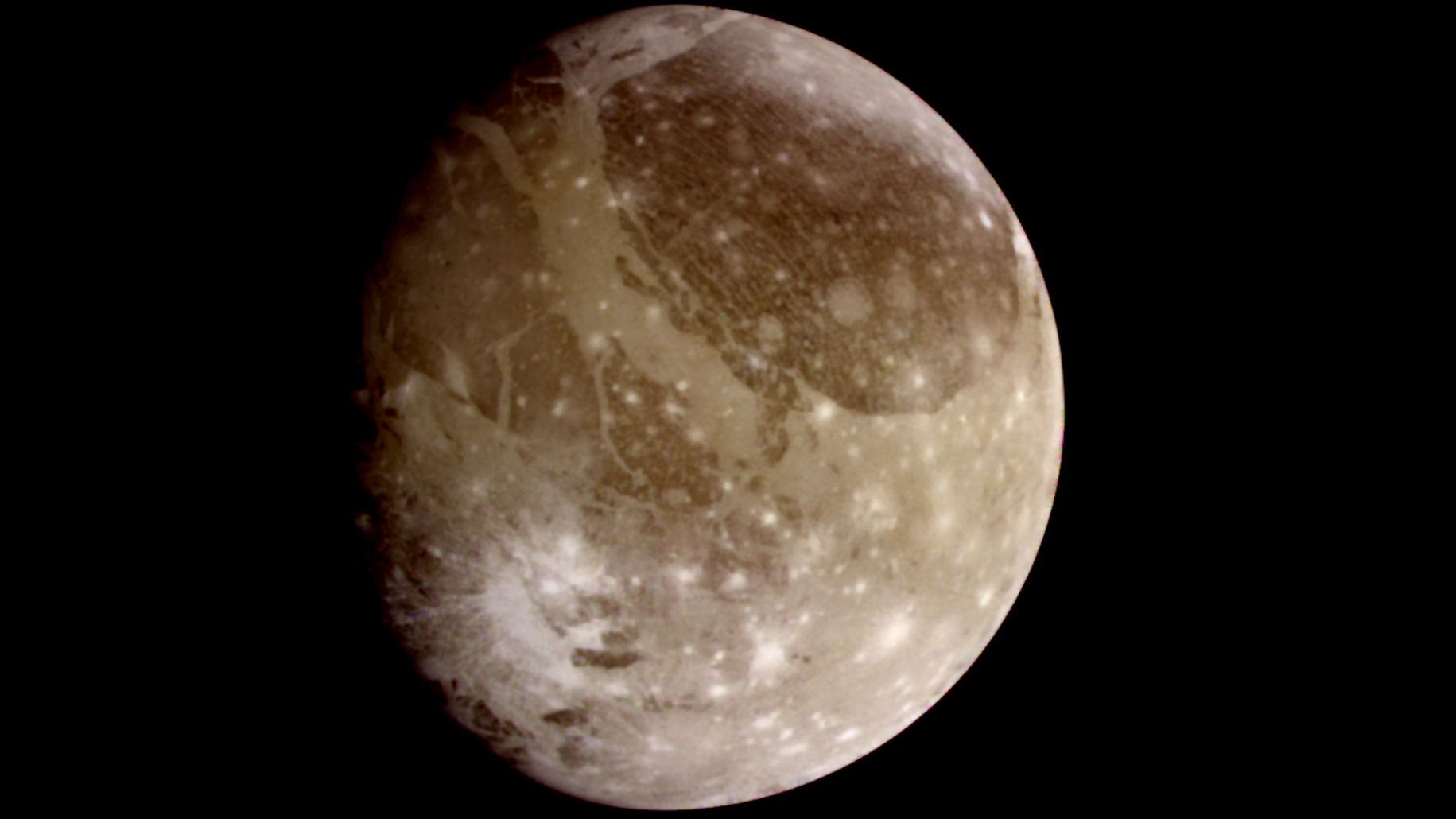Ganymede, Jupiter’s largest moon, reigns supreme as the largest moon in our solar system. It dwarfs even the planet Mercury and the dwarf planet Pluto, and is only slightly smaller than Mars. But how does Ganymede size up against Earth’s moon? This article delves into the fascinating size comparison between these two celestial bodies.
Ganymede vs. The Moon: A Size Comparison
Ganymede boasts a mean radius of 1,635 miles (2,631.2 km), while Earth’s moon has a mean radius of 1,079.6 miles (1,737.4 km). This significant difference translates to Ganymede being approximately 1.5 times larger than the moon in terms of radius.
To visualize this:
- Diameter: Ganymede’s diameter is roughly 3,270 miles (5,262.4 km), compared to the moon’s diameter of 2,159.2 miles (3,474.8 km). Ganymede is about 1.5 times wider than the moon.
- Volume: Ganymede’s volume is considerably larger – about 3.3 times greater than the moon’s.
In essence, if you placed the moon next to Ganymede, the latter would appear as a giant in comparison. This substantial size difference highlights Ganymede’s dominance in the realm of moons.
Ganymede’s Other Impressive Features
While its size is a defining characteristic, Ganymede possesses other remarkable attributes:
- Internal Structure: Ganymede features a metallic iron core, a rocky mantle, and a thick icy crust, possibly concealing a vast, salty ocean.
- Magnetosphere: Uniquely among moons, Ganymede generates its own magnetic field, a feature typically associated with planets. This magnetosphere is embedded within Jupiter’s larger magnetic field.
- Surface Features: Ganymede’s surface displays a diverse terrain, with dark, cratered regions and lighter areas marked by intricate grooves formed by tectonic activity or water releases.
This montage compares New Horizons’ best views of Ganymede. (Image credit: NASA/Johns Hopkins University Applied Physics Laboratory/Southwest Research Institute)
Exploring Ganymede: Past and Future Missions
Multiple spacecraft have visited the Jovian system, providing valuable data and images of Ganymede. Notable missions include Pioneer 10 and 11, Voyager 1 and 2, and the Galileo spacecraft.
The European Space Agency’s JUICE (Jupiter Icy Moons Explorer) mission, launched in April 2023, is scheduled to arrive at Jupiter in 2031. With Ganymede as its primary target, JUICE will investigate the moon’s potential habitability, study its ocean and icy crust, map its surface, and probe its atmosphere and magnetic field.
Conclusion: A Lunar Giant
Ganymede’s size significantly surpasses that of Earth’s moon, making it a true giant in the lunar landscape. Its unique characteristics, including its potential subsurface ocean and intrinsic magnetic field, further elevate its scientific importance. With the upcoming JUICE mission, our understanding of this intriguing celestial body is poised for a significant leap forward. Ganymede stands as a testament to the vastness and diversity of our solar system, offering tantalizing clues about the potential for life beyond Earth.

